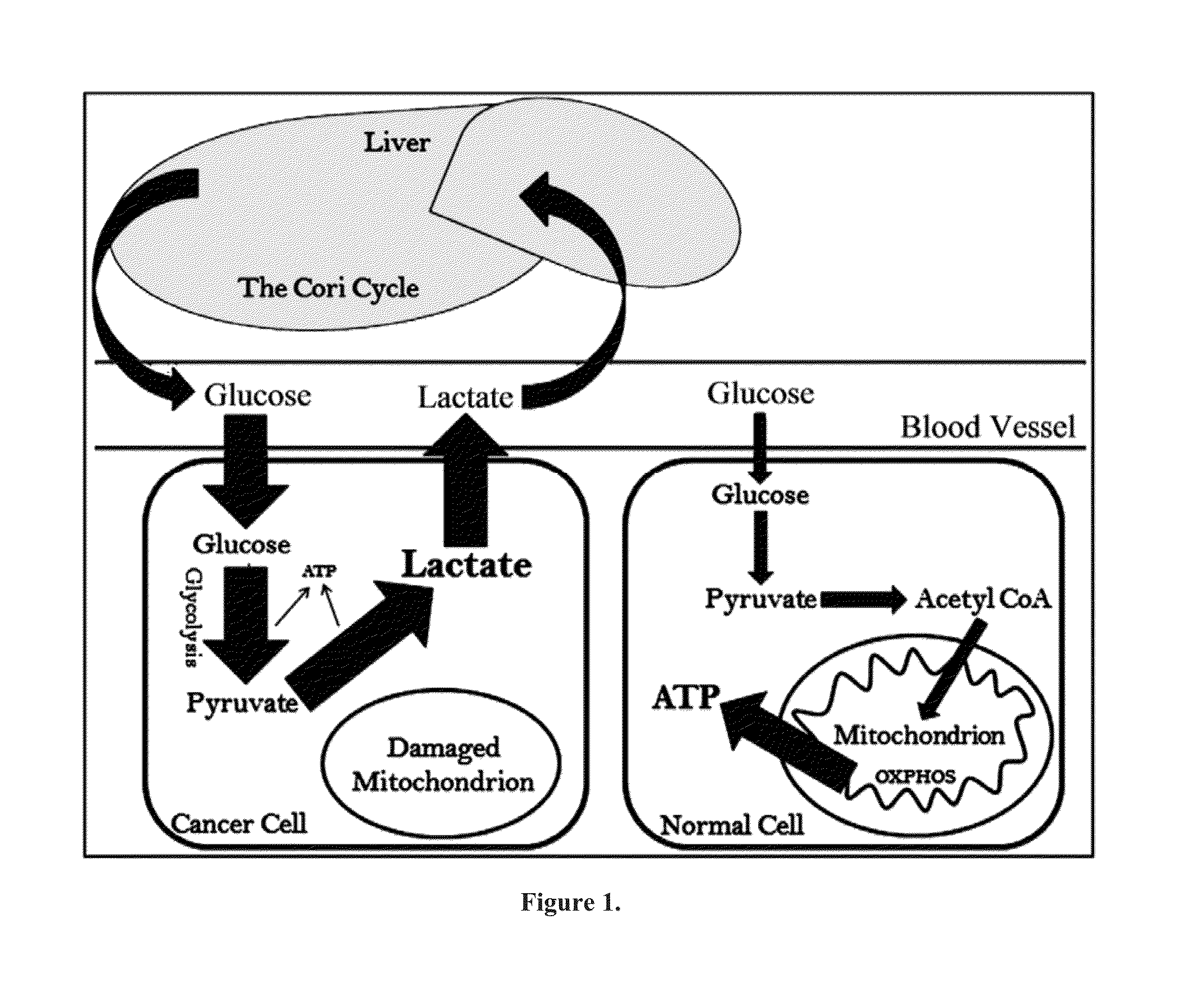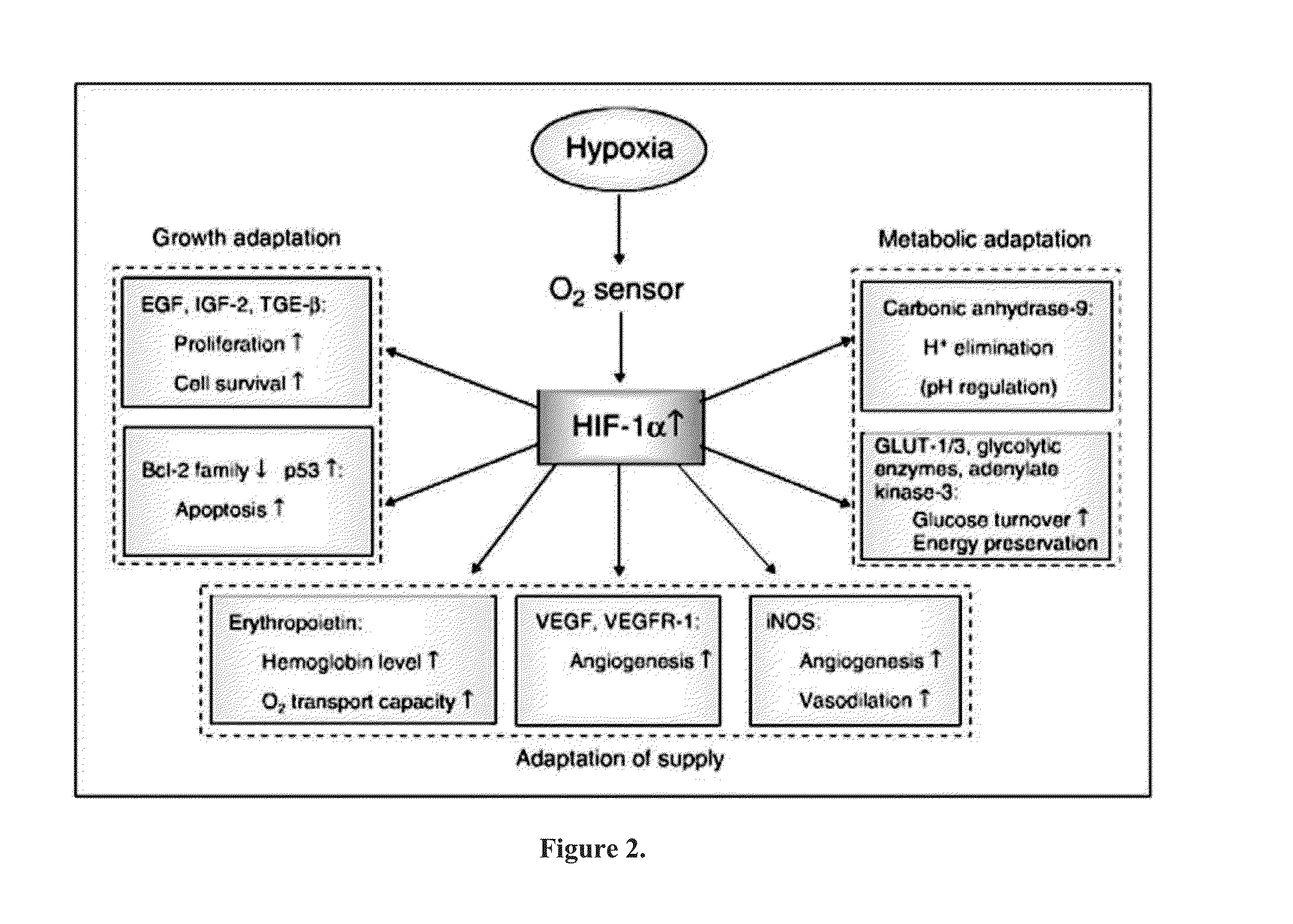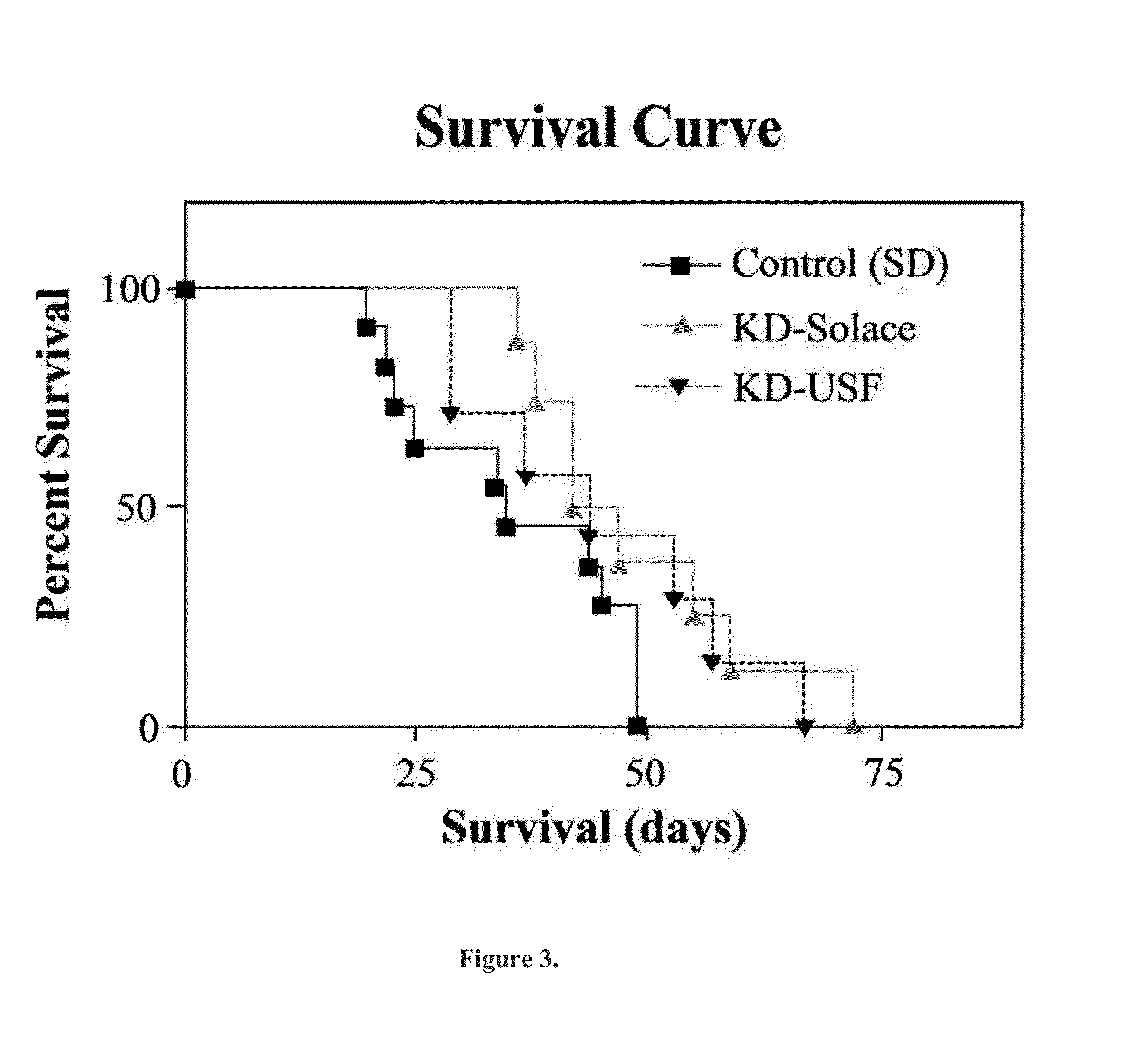Targeting cancer with metabolic therapy and hyperbaric oxygen
a metabolic therapy and oxygen therapy technology, applied in the field of cancer and oncogenic diseases, can solve problems such as cell death, and achieve the effects of improving the outcome of many patients, reducing the risk of cancer progression, and enhancing glucose uptak
- Summary
- Abstract
- Description
- Claims
- Application Information
AI Technical Summary
Benefits of technology
Problems solved by technology
Method used
Image
Examples
example 1
[0049]To determine the anti-cancer effects of KD metabolic therapy on cancer, survival time, rate of tumor growth, body weight, blood glucose, and blood ketones were measured in mice with VM-M3 metastatic cancer treated with KD,
[0050]VM-M3 / Fluc cells (T. Seyfried; Boston College) were obtained from a spontaneous tumor in a VM / Dk inbred mouse and adapted to cell culture (Huysentruyt et al., Metastatic cancer cells with macrophage properties: evidence from a new murine tumor model. Intl J Can. 2008, 123(1):73-84). The VM-M3 cells were identified from a spontaneous tumor in VM / dk inbred strain, and exhibit highly metastatic properties upon subcutaneous implantation, with rapidly metastasis throughout the model organism. VM-M3 / Fluc cells are transfected with the firefly luciferase gene which produces a bioluminescent product in the presence of the enzymatic substrate luciferin (Shelton, et al. (2010) A novel pre-clinical in vivo mouse model for malignant brain tumor growth and invasion....
example 2
[0056]The anti-cancer effects of R,S-1,3-butanediol diacetoacetate ester (KE) and 1,3-butanediol (BD) as sources of supplemental ketones for metabolic therapy were determined for survival time, rate of tumor growth, body weight, blood glucose, and blood ketones.
[0057]Many cancers are unable to effectively utilize ketone bodies for energy (Maurer, et al. (2011) Differential utilization of ketone bodies by neurons and glioma cell lines: a rationale for ketogenic diet as experimental glioma therapy. BMC Cancer. 2011 Jul. 26; 11:315; Tisdale & Brennan (1983) Loss of acetoacetate coenzyme A transferase activity in tumours of peripheral tissues. British journal of cancer 47: 293-297; Magee, et al. (1979) The inhibition of malignant cell growth by ketone bodies. The Australian journal of experimental biology and medical science 57: 529-539). Furthermore, evidence suggests that ketones themselves possess inherent anti-cancer properties as βHB administration inhibits cancer cell proliferatio...
example 3
[0067]To determine the anti-cancer effects of KD metabolic therapy and HBO2T, survival time, rate of tumor growth, body weight, blood glucose, and blood ketones were measured in mice with VM-M3 metastatic cancer treated with KD, HBO2T, or combined KD+HBO2T.
[0068]As shown above, KD is useful as a metabolic therapy for cancer by reducing availability of glucose, the main energy substrate for tumors, and inhibiting several oncogene pathways such as IGF-1, MYC, mTOR, and Ras. HBO2T increases oxygen saturation inside tissues, reversing the cancer-promoting effects of tumor-hypoxia and enhancing ROS production which can induce cell death (D'Agostino, et al. (2009) Acute hyperoxia increases lipid peroxidation and induces plasma membrane blebbing in human U87 glioblastoma cells. Neuroscience 159: 1011-1033). While these therapies have been evaluated separately, the overlapping mechanisms mediating their efficacy are significantly enhanced by combining the treatments. Furthermore, even thoug...
PUM
| Property | Measurement | Unit |
|---|---|---|
| absolute pressure | aaaaa | aaaaa |
| survival time | aaaaa | aaaaa |
| survival time | aaaaa | aaaaa |
Abstract
Description
Claims
Application Information
 Login to View More
Login to View More - R&D
- Intellectual Property
- Life Sciences
- Materials
- Tech Scout
- Unparalleled Data Quality
- Higher Quality Content
- 60% Fewer Hallucinations
Browse by: Latest US Patents, China's latest patents, Technical Efficacy Thesaurus, Application Domain, Technology Topic, Popular Technical Reports.
© 2025 PatSnap. All rights reserved.Legal|Privacy policy|Modern Slavery Act Transparency Statement|Sitemap|About US| Contact US: help@patsnap.com



